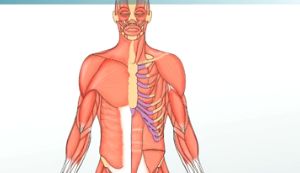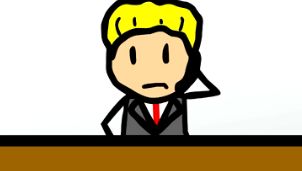Systems Management Theory - Answers
The answers are in BOLD below.
NOTE: The transcript from the video is listed below the quiz for your reference.
1. What is the underlying belief of systems management theory?
- Systems management is IT
- A system is a collection of parts that work together
- Someone has to run the system
- A system is a collection of parts brought together to accomplish some end goal or objective
- There is no underlying belief; they just take it as it comes
2. Define an open system.
- A system that is open 24/7
- A system that does not interact with the environment around it
- A system that continually interacts with the environment around it
- A system you have a key for
- A system that takes in new information
3. Define a closed system.
- A system (or company) independent of the environment around it
- You need a key to enter it
- One that is never open
- One that relies on the environment
- There is no such thing as a closed system
4. Define a subsystem.
- What the NAVY uses
- A system that is part of a larger system
- A bunch of little systems
- One that is not as important as other systems
- A system that is part of a smaller system
5. What is synergy?
- A chemical
- A new car
- A method of thinking
- A type of laboratory device
- Order to a process where all the parts work harmoniously and in unison with each other
Every business has to follow a process, and that process is the result of a system. The systems management theory focuses on systems and how they work and function within an organization.
What Is a System?
People seem to have systems for just about everything: how to get ready for work in the morning, how to cut the lawn, and even how to do the dishes. The facts are we are a society of systems. Even people that do not have a system, well, that is their system for doing things. One way or another, systems are all around us and they are part of our world.
 |
Taking this a step further, the systems management theory believes that a system is a collection of parts brought together to accomplish some end goal or objective. Looking at it from that perspective, if one part of the system fails or is taken out, the system itself cannot work. Think about if you have a system to get ready for work in the morning and part of that system is taking a shower. If there is no hot water (or worse yet, no water at all), the system breaks down and it is changed. There is still a system, just not the one you are used to, and you have to change the system in order to get out the door and go to work.
That concept is really the foundation of the systems management theory. For this theory, everything is part of a system. All pieces go together, and while it can indeed function if one part is taken out, the functionality is impaired and the system itself has changed.
The Company and the System
If we take that thought process behind this theory, it is safe to say we can begin to see how this theory helps with a global representation. What I mean is if we have systems, and they work, we can reproduce them all around the world (okay, with some modifications). Take McDonald's, for example. While the food in other countries might be different (there are no hamburgers at McDonald's in India), the system to get the food is the same: walk up, look at the menu on the board, order combo meal number 4, and you're on your way.
 |
Thus, the system is duplicated around the world, and it works. Again, we do have to make some modifications, but I don't want you to think that one system works the same everywhere. But even with modifications, the system makes it much easier for an organization to produce a similar customer experience around the world. While McDonald's is only one example, there are many more, such as Starbucks, Wal-Mart, and boarding an airplane. The list goes on and on.
As you can see, there is usually a company behind the system, but the system is part of how the company runs. In a few moments we are going to talk about different viewpoints on systems, and that will also help you to understand the systems management theory. The best way to understand this concept is to imagine transportation and different modes of transportation. We can say we are going to California, but we could take a bus, car, or plane. The same applies to the different viewpoints of the system types involved in systems management theory.
System Types
 |
While systems themselves can be duplicated and go global, there are aspects of system types (or architecture, if you will) that help frame the type of system being used. In systems management theory, we have three basic system types:
- Open System: A system that continually interacts with the environment around it. For example, a manufacturer might use several different suppliers of flour to make the product they produce, or an organization might have to move or change as the demands of consumers change.
- Closed System: Is the opposite of an open system. It is a system (or company) independent of the environment around it. Usually when we look at closed systems, we are looking at very high tech types of products that have limited sources of input and produce a consistent product or output (like space satellites). In fact, satellites are produced in a protected environment, like a lab, to ensure there is no contamination.
One of the simplest images that can help you grasp these first two types is a jar. When it's open, it's an open system. It can interact with air, water and anything else around it. When it has a lid on it, it's a closed system. It can only interact with what's inside the jar - there are no outside influences on it.
The third basic type is a:
- Subsystem: This is much easier to understand. This is a system that is part of a larger system - much like how the train system around an airport can get you from terminal to terminal (the larger part of the system).
Another way to get a mental image of subsystems is to think about the human body. One large system makes us what we are. However, we have the subsystems of the digestive system, nervous system, and circulatory system contained within us.
 |
The different types of systems exist - as odd as this sounds - where they are needed. It is best not to really look at them as separate systems, but rather as a viewpoint on what type of system (or we could say product) is present. Like our example of the company that needs flour, it is only an open system because the company does interact with the environment around it (a wide range of suppliers and then, ultimately, a wide range of consumers). A closed system could be represented by the messages one might get from corporate headquarters. Those messages go out and tell you what to do, and they are not looking for feedback or interaction.
Do not get confused about the fact that when we talk about systems here, we are not talking about the specific steps it takes to produce a product - we're talking about whether those steps, taken together, have the characteristics of an open, closed, or subsystem.
Order and Chaos in Systems
No matter what system is present, there are times when the system will work right and have synergy, or order to a process where all the parts work harmoniously and in unison with each other. Or, there are times that entropy will be present, and that is discord or a lack of predictability, a gradual decline into disorder. In other words, either things work together or they do not. No matter what system you have (open, closed, or subsystem) there can be either synergy or entropy present. It is a matter of how the managers producing the product want the system to work.
- Do they want everyone to be on the same page and work in unison with each other as a team (like a pilot and copilot of an airplane)?
- Do they like it when there is discord and people compete or fight against one another (like a sales team where natural competition and discord is sometimes preferred)?
No matter what system, organization, or process is present, there will be varying degrees of synergy or entropy present. It is up to a manager to manage these areas and promote or remove them from the situation.
 |
Lesson Summary
Remember, the systems management theory believes that a system is a collection of parts brought together to accomplish some end goal or objective. Also, within that thought process, we have different system types:
- Open System: A system that continually interacts with the environment around it.
- Closed System: Is the opposite of an open system. It is a system (or company) independent of the environment around it.
- Subsystem: A system that is part of a larger system.
These types of systems can operate with synergy or entropy. Just because the system is present does not mean it will run smoothly. What system an organization uses is dependent on the type of product they produce and how the company wishes to run. No matter what, at the end of the day every company has to have a system in order to function - it is just a matter of what type of system they choose.